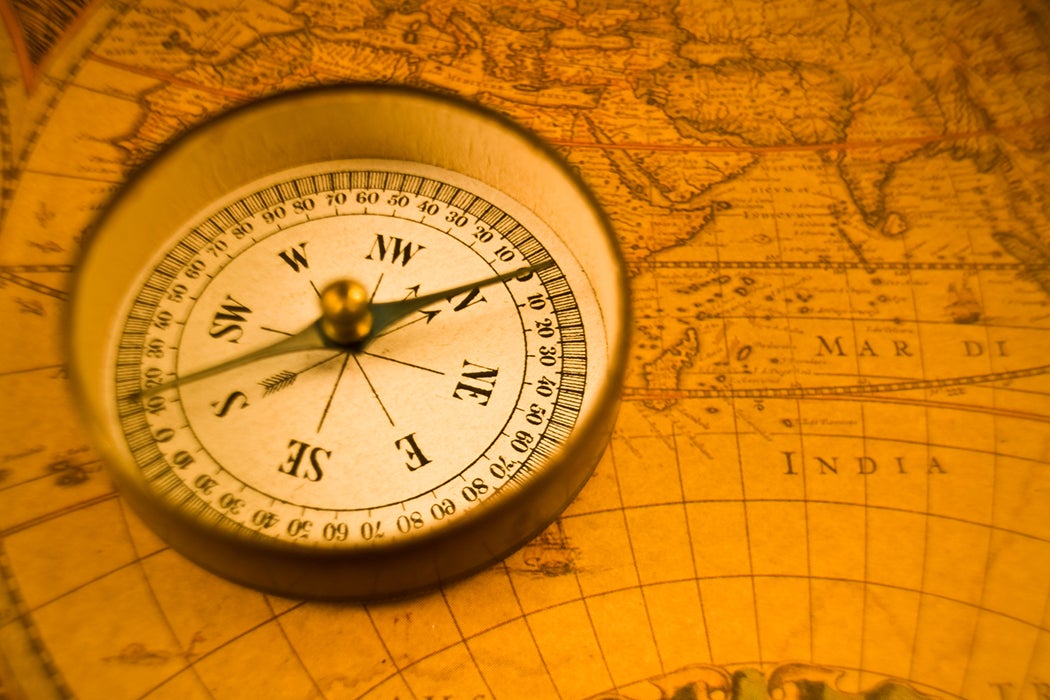What would happen if the Earth’s magnetic poles flipped? Recent coverage of a potential impending geomagnetic reversal has taken on a somewhat apocalyptic tone. In fact, the Earth’s magnetic poles reversing will not end civilization. (You’ll need to relabel your compass, but that’s probably about it.). Moreover, Earth’s magnetic poles have a long history of switching from North to South and back again.
Scientists Mike Fuller, Carlo Laj, and Emilio Herrero-Bervera write that geomagnetic reversal has been discussed since the early 1900s, when a French scholar demonstrated that a sample of rock he collected had been magnetized in a stable but opposite direction to the prevailing direction. A compass made from this rock would point South rather than North. Eventually, he was able to prove that the magnetic direction in the rock was representative of the Earth and not just a peculiar feature of that particular rock, and the existence of geomagnetic reversal was accepted.
In the 1960s, geomagnetic reversal helped resolve what was at the time one of the greatest debates in Earth Science: whether or not continental drift existed. Examination of the mid-ocean ridges suggested that the ocean floors were spreading apart, and magma from deep within the Earth was rising out of the gap and widening the ocean basins. Two Cambridge geologists realized that as the magma cooled it took on the magnetic polarity prevailing on Earth at the time. They soon discovered that spreading out from the mid-ocean ridge were stripes of rock that had magnetic fields of alternating polarity. This proved conclusively that the ocean basins were growing. Continental drift had to be real.
Geological samples have demonstrated a history of magnetic reversal going back at least 150 million years. It is understood that the process occurs roughly twice every million years, giving rise to the idea (some would say a misconception) that a reversal is somehow overdue, since the last reversal was about 780,000 years ago. Some gaps between reversals, however, have lasted for tens of millions of years. Geomagnetic reversal does not run on a timetable.
What happens during a reversal is difficult to study, for rocks with transitional fields are scarce. The Earth’s magnetic field is generated by convection movement of the liquid, outer portion of our planet’s metal core. The best guess as to why reversals occur is that occasionally there are distortions in the core’s convection that twist and redirect the magnetic field. The whole process seems to take thousands of years. During the transition, the Earth’s magnetic field may weaken slightly.
Scientists now look to the record of reversals in order to understand more about the processes underlying Earth’s magnetic field. While its exact orientation might not matter, we do need the magnetic field; it’s a crucial part of our defense against solar radiation. But a little change in the field won’t spell our doom.
Editor’s Note: This story was updated to make the pull quote shareable and to delete duplicated words in the subheading.







